The Paris climate agreement maps out that we must limit global warming to two degrees Celcius above pre-industrial levels. Globally, that means cutting emissions in half in a world where energy consumption will go up almost by 50 per cent. Jean-Pascal Tricoire shares Schneider Electric’s strategy to tackle this.

April 20th, 2018
It is our corporate duty to fight climate change brought on by carbon emissions. But we are running against the clock and we must act now. As the Paris climate agreement maps out, we must limit global warming to two degrees Celcius above pre-industrial levels.
During the same period, as world energy consumption will go up by almost 50 per cent (according to McKinsey Energy Outlook 2016), we must become three times more energy efficient to steer the course towards a better climate outlook. We’re all energy stakeholders. We are in this together so future generations can enjoy a clean planet.
As a technology company, Schneider Electric brings to the table solutions that drive energy efficiency and long-term sustainability. We’re committed to ensuring that Life Is On™ for everyone, everywhere, and at every moment. This corporate promise also means helping the 2.3 billion people worldwide who do not have access to reliable electricity.

A Schneider Electric “Smart City,” Mumbai stands at the crossroads of today’s energy paradox. This booming city signals the growing global demand for energy, especially in emerging economies. At the same time, it places us in a world where access to clean energy is unreliable (and, in some cases, nonexistent).
Climate leadership is a great opportunity for innovation. Technologies enable us to rethink the way the world traditionally has dealt with energy and greenhouse (GHG) gas emissions. Now buildings, for example, can eliminate massive amounts of energy waste and carbon output if they have the right tools to see it.
EcoStruxure™ is the common thread across our main markets. This architecture combines energy, automation, and software to accelerate efficiencies. It leverages Internet of Things advancements such as mobility and sensing to meet the demand for more sustainable and connected energy. It is our technological answer to the global call for climate action.
We must be a model for our customers and other companies. At COP21 in December 2015, we pledged to become a net-zero company by 2030. Our 10 COP21 commitments guide our efforts. They also align with the Paris climate agreement and contribute to the United Nations Sustainable Development Goals.
Five of these commitments are taken from our 2015-2017 Planet & Society barometer, Schneider’s internal sustainable development scorecard. It highlights three-year commitments to specific objectives to keep our stakeholders informed of the company’s progress each quarter. Schneider’s latest Strategy & Sustainability Highlights report shows how we’re doing.
The report also illustrates ways we are closing the energy gap. To date, 4.2 million households at the base of the pyramid have access to energy thanks to our solutions and programs. We also have facilitated training in the electricity trades in emerging economies. We have trained more than 120,000 people in more than 20 countries since 2009. And this year, we expanded our Access to Energy training program to include entrepreneurship.
We used to be among a group of corporate outliers with a rare ‘green for growth’ approach towards building a sustainable economy. Now most companies can envision the possibility of a net-zero society in our lifetime and are taking steps in that direction. Profit without sustainability is not acceptable. We must act immediately for a better future.
INDESIGN is on instagram
Follow @indesignlive
A searchable and comprehensive guide for specifying leading products and their suppliers
Keep up to date with the latest and greatest from our industry BFF's!
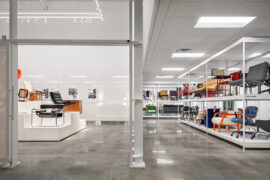
The undeniable thread connecting Herman Miller and Knoll’s design legacies across the decades now finds its profound physical embodiment at MillerKnoll’s new Design Yard Archives.

A longstanding partnership turns a historic city into a hub for emerging talent

London-based design duo Raw Edges have joined forces with Established & Sons and Tongue & Groove to introduce Wall to Wall – a hand-stained, “living collection” that transforms parquet flooring into a canvas of colour, pattern, and possibility.
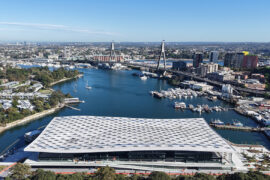
With a date now set for January 2026, Sydney’s landmark project is taking shape as a significant and welcome addition to civic life in the city.
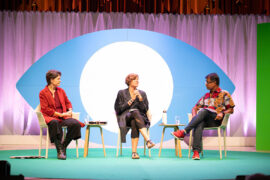
At the World Design Congress in London, a simple idea threaded through two dense days: design is not an island. It moves inside wider systems of economics, policy, finance and ecology.
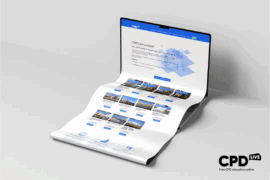
The final day of CPD Live’s 2025 season delivers three must-attend sessions exploring circular design for furniture and fitouts, and the science behind safe, high-quality drinking water. Starting from 9 AM AEDT, 16th October – it’s your last opportunity this year to join our Live CPD sessions and finish 2025 inspired.
The internet never sleeps! Here's the stuff you might have missed

Sydney Open invites the public to explore over 55 buildings, spaces and new additions to the skyline, with a newly released Talks & Tours program offering direct access to the architects behind Bundarra and Pier Pavilion.
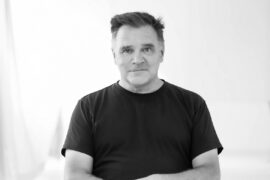
In this comment piece, COX Principal David Holm reflects on Carlo Ratti’s curatorship in which climate, colonisation and gender equity took centre stage at the Venice Biennale.

At the World Design Congress in London, a simple idea threaded through two dense days: design is not an island. It moves inside wider systems of economics, policy, finance and ecology.

McIldowie Partners, in association with Joost Bakker, has been awarded The Learning Space at the INDE.Awards 2025. Their project, Woodleigh Regenerative Futures Studio, redefines the educational environment as a living ecosystem that nurtures sustainability, innovation, and community.